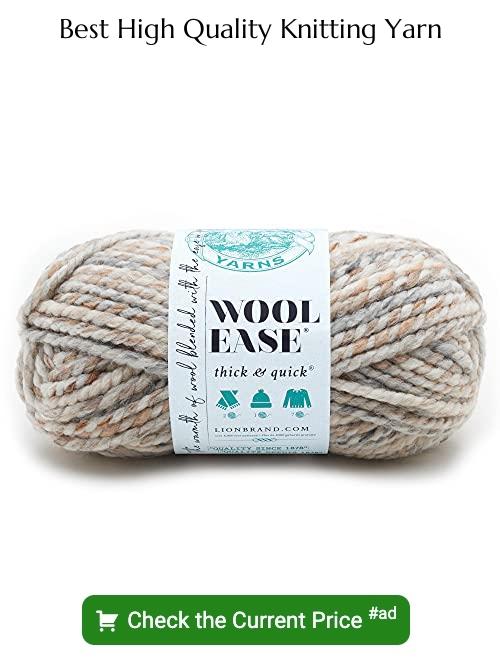Discover the various types of yarn quality as we delve into their unique characteristics, perfect for enhancing your knitting and crocheting projects.
Are you tired of spending your hard-earned money on yarn that ends up falling apart or losing its shape after just a few uses? As a crochet and knitting enthusiast, I know how frustrating it can be to invest time and effort into a project only to have it ruined by poor quality yarn. That’s why in this blog post, we’ll be discussing the different types of yarn quality available in the market.
By understanding what makes a high-quality yarn, you’ll be able to make informed decisions when purchasing materials for your next project. So grab your favorite cup of tea and let’s dive into the world of yarn quality!
Wool
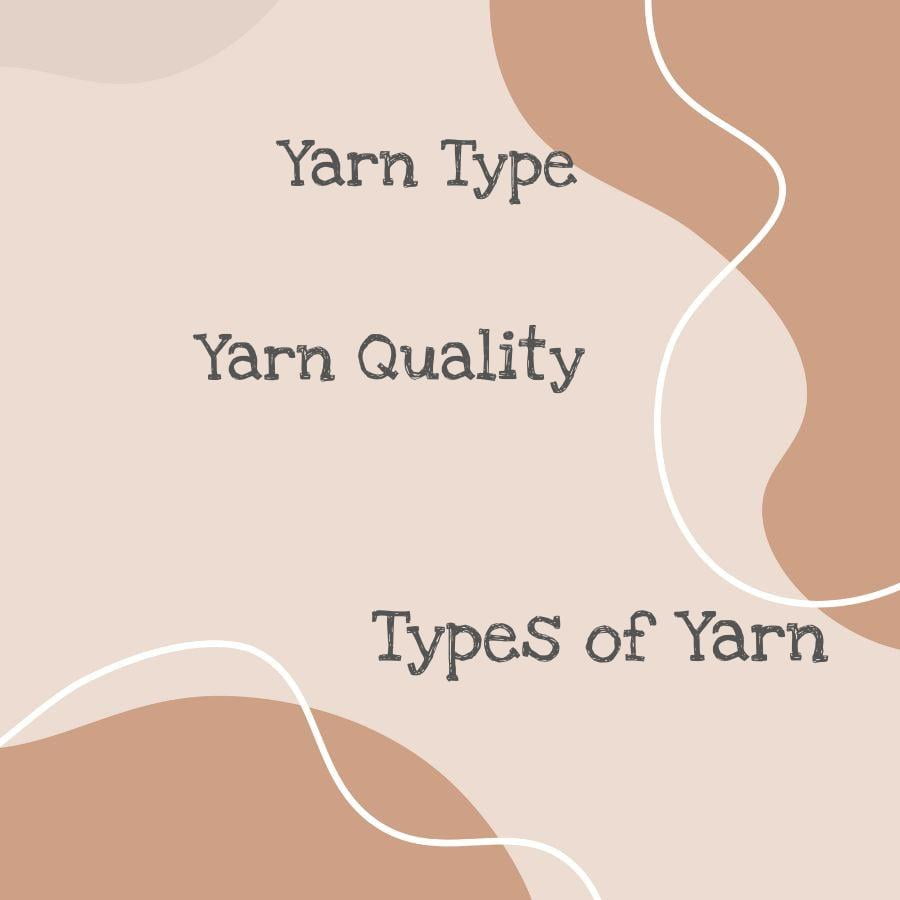
Wool is one of the most popular types of yarn, and for a good reason. It’s warm, durable, and versatile.
Wool comes from sheep fleece but can also be obtained from other animals such as goats (cashmere), rabbits (angora), or llamas.
When shopping for wool yarn, it’s essential to consider its quality. High-quality wool has a soft texture that feels comfortable against the skin while low-quality wool may feel scratchy or rough.
Another factor to consider when choosing wool is its weight category. Wool can range from super bulky to lace weight depending on how thick or thin it is spun.
Alpaca
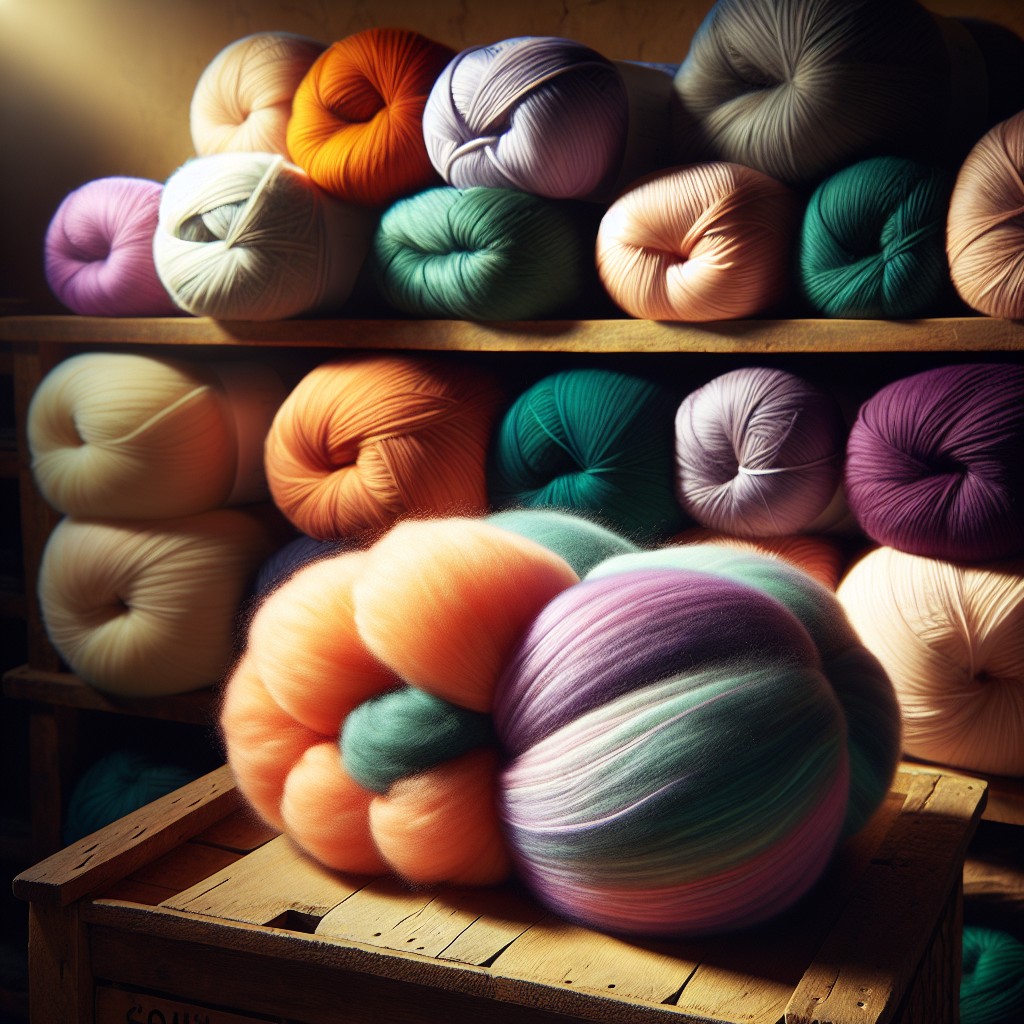
Alpacas are native to South America and their wool has been used for centuries by the indigenous people of the Andes Mountains. The fiber from alpacas is hypoallergenic, making it an excellent choice for those with sensitive skin or allergies.
One of the unique characteristics of alpaca yarn is that it comes in two types: huacaya and suri. Huacaya fibers are crimped like sheep’s wool while suri fibers have a more silky texture that drapes beautifully when knit or crocheted.
Another advantage of using alpaca yarn in your projects is its insulating properties which make it perfect for winter garments such as hats, scarves, gloves, sweaters or blankets. When shopping for alpaca yarns look out for blends with other natural fibers such as silk or cashmere which can add extra strength without sacrificing softness.
Cashmere
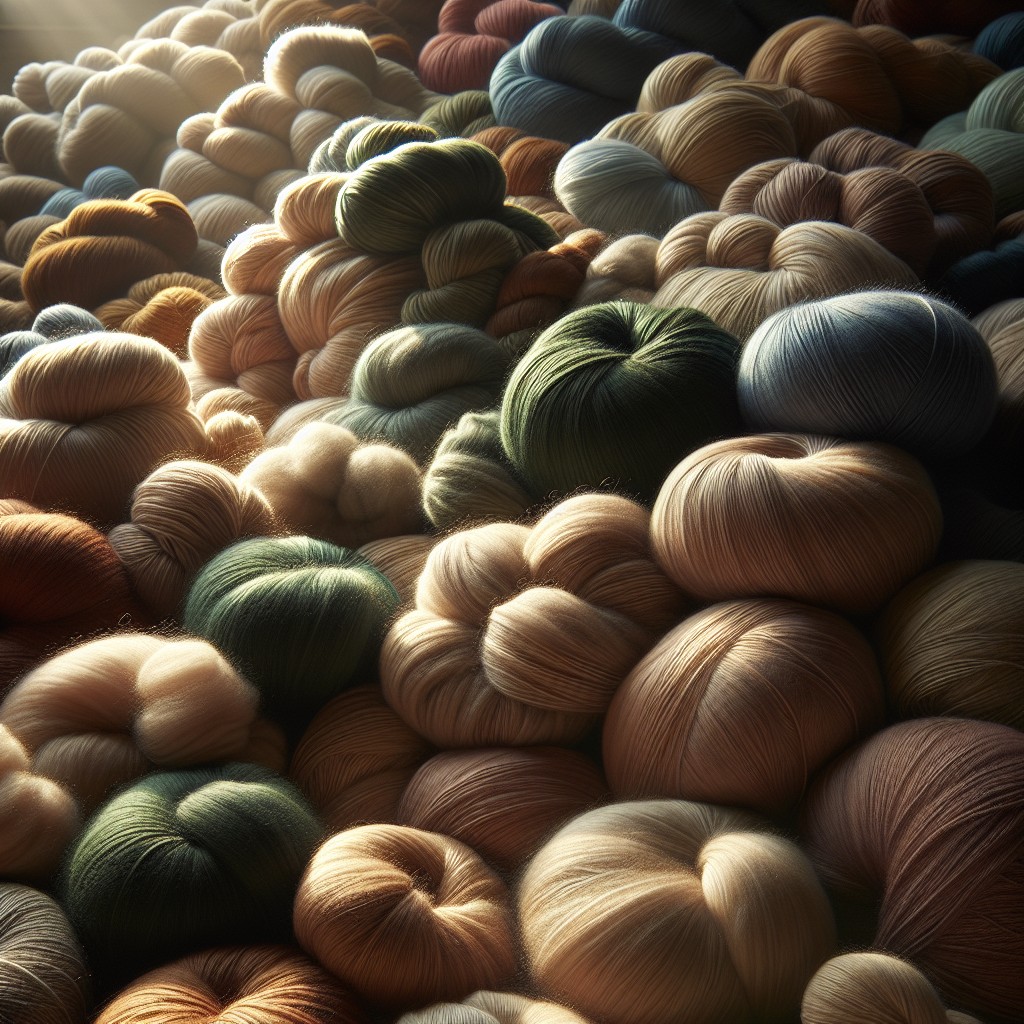
It’s known for its softness, warmth, and durability. Cashmere yarn is perfect for creating cozy sweaters, scarves, hats and other winter accessories.
When shopping for cashmere yarn quality matters as not all cashmeres are created equal. The highest quality fibers come from the neck and underbelly of the goat where it’s softer than on other parts of their body.
While it may be tempting to go with cheaper options when purchasing your materials keep in mind that lower-quality cashmeres tend to pill easily which can ruin your project’s appearance over time.
Investing in high-quality Cashmere will ensure you get a long-lasting product that looks great even after multiple uses or washings.
Mohair
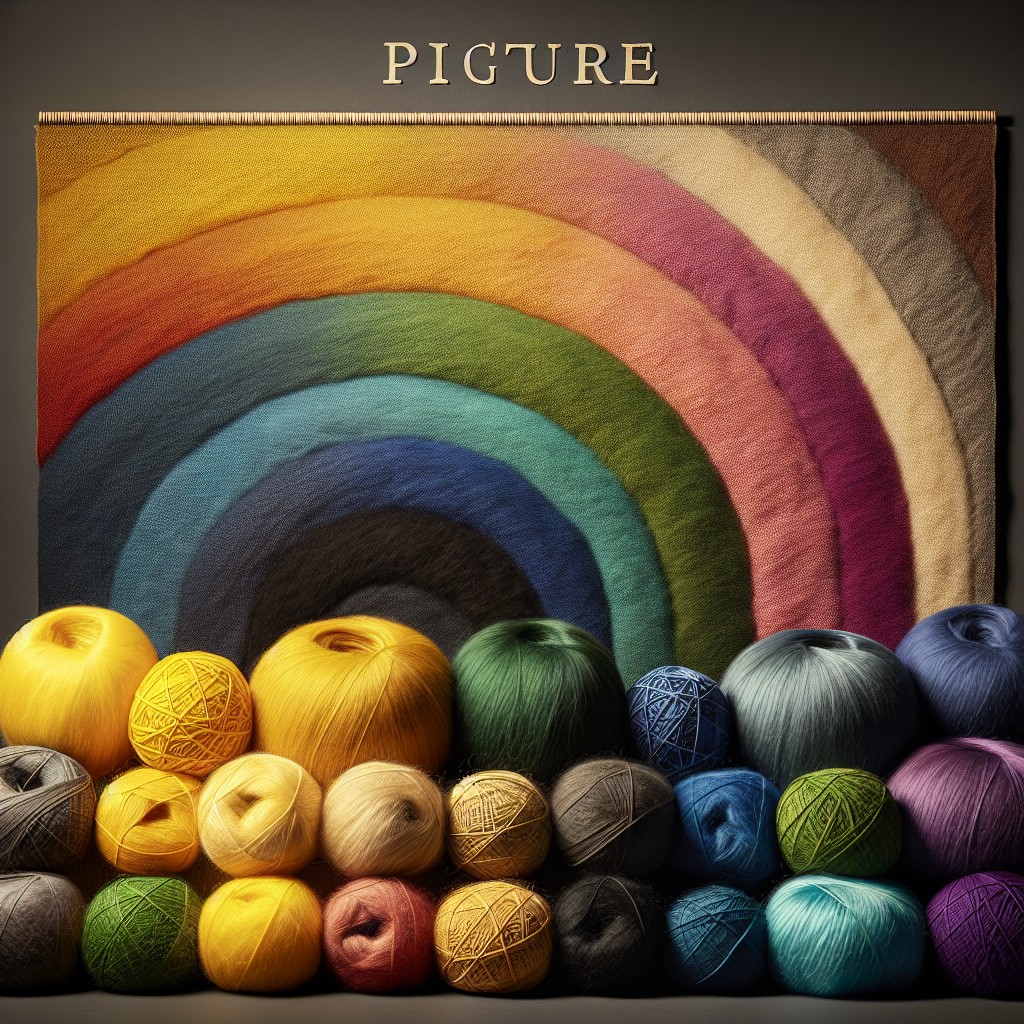
It’s known for its softness, durability, and lustrous sheen. Mohair fibers are naturally elastic and have excellent insulating properties, making it perfect for winter garments like sweaters and scarves.
One of the unique characteristics of mohair is its ability to take dye exceptionally well. This means you can find mohair in an array of vibrant colors that will make your projects stand out.
When working with mohair yarn, it’s essential to keep in mind that it has a halo effect due to the fine hairs around each fiber strand. This halo effect gives finished projects a fuzzy appearance which some people love while others may not prefer as much.
Angora

It’s known for its softness, warmth, and fluffy texture. The fibers are very fine and lightweight, making it perfect for creating delicate garments such as shawls or scarves.
However, due to the nature of how angora yarn is produced (by shearing or plucking), there has been controversy surrounding animal welfare in recent years. Some manufacturers have been accused of mistreating their animals during the production process.
As a responsible crafter who cares about animal welfare, it’s important to do your research before purchasing angora yarn. Look for brands that prioritize ethical practices and transparency in their sourcing methods.
If you do choose to use angora yarn in your projects, be sure to handle it with care as it can shed easily due to its loose fibers. Hand washing is recommended over machine washing as well.
Llama
Llama wool is hypoallergenic, making it an excellent choice for those with sensitive skin. It’s also lightweight yet warm, making it ideal for winter garments like hats and scarves.
One of the unique characteristics of llama wool is its natural water resistance. This means that items made from llama yarn will keep you dry in wet weather conditions.
When working with llama yarn, it’s essential to note that it can be a bit rougher than other types of animal fibers like cashmere or alpaca. However, this can be remedied by blending the fiber with softer materials such as silk or bamboo.
Cotton
It’s perfect for creating lightweight garments such as summer tops or baby clothes. Cotton yarn can be found in various weights ranging from lace to bulky, making it suitable for different types of projects.
One of the benefits of cotton yarn is that it’s easy to care for and can be machine washed and dried without losing its shape or color. However, one downside is that cotton doesn’t have much elasticity compared to other fibers like wool or acrylic.
When choosing a cotton yarn type, consider factors such as the weight category needed for your project and whether you prefer organic or non-organic options. Some popular brands include Lion Brand 24/7 Cotton Yarn and Bernat Handicrafter Cotton Yarn.
Silk
It’s made from the fibers of silkworms, which are carefully harvested and processed to create a smooth, shiny thread. Silk is known for its lustrous appearance, softness, and durability.
One of the benefits of using silk in your knitting or crocheting projects is that it drapes beautifully. This makes it an excellent choice for creating elegant shawls or scarves that will flow gracefully around your neck or shoulders.
Another advantage of silk yarn is its breathability. Unlike synthetic materials like polyester or nylon, silk allows air to circulate freely through the fabric.
This means you’ll stay cool and comfortable even on hot summer days when wearing clothing made from this material.
When working with silk yarns, keep in mind that they can be slippery due to their smooth texture. You may need to adjust your tension slightly when knitting or crocheting with this material so as not to drop stitches accidentally.
Linen
It’s known for its strength, durability, and ability to keep you cool in hot weather. Linen yarn is perfect for summer garments like tank tops, dresses, and lightweight shawls.
One of the benefits of using linen yarn is that it gets softer with each wash while still maintaining its shape. However, it can be challenging to work with due to its stiffness and lack of elasticity compared to other fibers like wool or cotton.
When working with linen yarns in your projects, consider using larger needles or hooks than what you would typically use for other fibers as this will help create a looser fabric texture. Blocking your finished project will help soften up any roughness caused by the stiff nature of linen.
Bamboo
It’s made from bamboo grass, which is harvested and processed into a soft, silky fiber that’s perfect for creating lightweight garments. Bamboo yarn has several unique characteristics that make it an excellent choice for certain projects.
One of the most significant benefits of bamboo yarn is its breathability. This makes it ideal for summer clothing or accessories like shawls or scarves.
Bamboo fibers are naturally antibacterial and moisture-wicking, making them great options for items like socks or baby clothes.
Another advantage of using bamboo yarn in your projects is its eco-friendliness. Bamboo plants grow quickly without requiring pesticides or fertilizers, making them a sustainable option compared to other types of fibers.
When working with this type of yarn, keep in mind that it can be slippery on needles due to its smooth texture; therefore you may need to adjust your tension accordingly when knitting with this material.
Hemp
It’s an eco-friendly option as it requires less water and pesticides than other crops, making it a sustainable choice for those who want to reduce their environmental impact. Hemp yarn is also known for its strength, which makes it perfect for creating items like bags or rugs that need to withstand heavy use.
When choosing hemp yarn, look out for the percentage of hemp in the blend as some manufacturers may mix in other fibers such as cotton or acrylic. A higher percentage of hemp will result in a sturdier finished product with more texture.
One thing to note about using hemp yarn is that it can be quite stiff at first but softens up after washing and wearing. It’s also important to keep in mind that because of its rougher texture, not all patterns are suitable when working with this type of fiber.
Acrylic
It’s made from synthetic fibers, which means it’s easy to care for and can be machine washed without losing its shape or color. Acrylic yarn is also available in a wide range of colors, making it perfect for creating vibrant projects that stand out.
One of the benefits of acrylic yarn is that it doesn’t shrink or stretch like natural fibers such as wool or cotton. This makes it an excellent choice for items that will be frequently washed, such as blankets and baby clothes.
However, some people may find acrylic yarn less comfortable than natural fibers because they tend to trap heat more easily. While acrylic may look similar to wool at first glance, experienced knitters can usually tell the difference between the two by touch alone.
Polyester
It’s made from petroleum, which means it’s not biodegradable like natural fibers such as wool or cotton. However, polyester yarns are often blended with other fibers to create unique textures and properties.
One of the benefits of using polyester yarn is that it’s easy to care for. It can be machine washed and dried without losing its shape or color, making it ideal for everyday wear items such as hats, scarves, and gloves.
Another advantage of using polyester yarn is that it comes in a wide range of colors and finishes. You can find matte or shiny versions depending on your preference.
However, one downside to consider when working with this type of yarn is that some people may have an allergic reaction to the material due to its synthetic nature.
Rayon
It’s known for its softness, drape, and breathability. Rayon is often used in summer garments because of its lightweight nature and moisture-wicking properties.
One thing to keep in mind when working with rayon yarn is that it can be prone to stretching out of shape if not handled carefully. To avoid this issue, make sure you follow the washing instructions on the label carefully.
Another benefit of rayon yarn is that it takes dye well, resulting in vibrant colors and beautiful shades. This makes it an excellent choice for projects where color plays a significant role.
Rayon can be an excellent option for those looking for a soft and breathable material with good drape qualities. Just remember to handle it gently during washing and drying so as not to stretch or damage your finished project!
Nylon
It’s known for its durability, strength, and elasticity. Nylon yarn is often used in projects that require stretchiness such as socks or sportswear.
It’s also great for making bags and other accessories because of its resistance to abrasion.
One thing to keep in mind when working with nylon yarn is that it can be slippery on needles or hooks, so you may need to adjust your tension accordingly. Nylon doesn’t have the same breathability as natural fibers like cotton or wool which can make it less comfortable to wear during warmer months.
Yarn Fiber Blends
These blends are often created to combine the best qualities of each fiber, resulting in a yarn that is stronger, softer or more durable than one made from a single material.
Common fiber blends include wool and acrylic for warmth and softness; cotton and linen for breathability; silk and cashmere for luxury; bamboo and cotton for eco-friendliness.
When choosing a blended yarn, it’s important to consider how each fiber will affect your project’s drape, texture, stitch definition as well as care instructions. Be sure to read the label carefully before purchasing any blend so you know what you’re getting into.
Novelty and Specialty Yarn Types
These yarns come in various textures, colors, and materials that can make any project stand out. Some popular novelty yarn types include eyelash yarn, ribbon or tape yarn, boucle or looped yarns, metallic thread-infused options like Lurex or Angelina fibers.
Specialty Yarn Types are designed with specific purposes in mind such as baby blankets (baby soft), dishcloths (cotton), socks (wool/nylon blends) among others. They may also be made from unusual materials like recycled plastic bottles.
When working with these types of specialty and novelty fibers it is important to keep the pattern simple so that the texture of the fiber stands out without being lost in complicated stitches. It’s also essential to pay attention when washing them since some require special care instructions due to their delicate nature.
How to Choose a Yarn Type for Your Project
First and foremost is the fiber content of the yarn. Different fibers have unique characteristics that can affect how a finished project looks and feels.
For example, wool is a popular choice for many knitting projects because it’s warm, durable, and has natural elasticity. On the other hand, cotton is lightweight and breathable but lacks stretchiness.
Another factor to consider when choosing yarn type is texture. Yarns come in various textures such as smooth or bumpy which can add interest or dimensionality to your work.
Lastly, you’ll want to think about color options available in different types of yarns since this will impact how well they match with other colors used in your pattern or design scheme overall.
Yarn Type Comparison Chart
One of the most important is the type of fiber used in the yarn. Each fiber has its unique characteristics that affect how a finished project will look and feel.
To help you make an informed decision, we’ve created a Yarn Type Comparison Chart that outlines some of the most common types of fibers used in yarn and their properties. This chart includes information on wool, alpaca, cashmere, mohair, angora, llama cotton silk linen bamboo hemp acrylic polyester rayon nylon blends novelty and specialty types.
By referring to this chart when selecting your next skein or ball of yarn for your knitting or crochet projects can save you time and money by ensuring that you choose a suitable material with desirable qualities such as softness durability warmth moisture-wicking ability among others depending on what’s required by your pattern.
What’s the Best Knitting Yarn for Allergies and Sensitive Skin?
The wrong type of yarn can cause itching, rashes, and other uncomfortable symptoms. Fortunately, there are several options available that are gentle on the skin.
One of the best choices for those with allergies or sensitive skin is cotton yarn. Cotton is a natural fiber that’s soft and breathable, making it ideal for warm-weather garments like t-shirts and summer dresses.
It’s also hypoallergenic and easy to care for.
Another option to consider is bamboo yarn which has anti-bacterial properties making it perfect if you’re prone to infections caused by bacteria build-up in clothing fibers.
For those who prefer animal fibers but still want something gentle on their skin should try alpaca wool as its hypoallergenic nature makes it less likely than sheep’s wool to cause an allergic reaction while still providing warmth without being too heavy.
When shopping around look out specifically labeled “hypoallergenic” or “anti-allergy” types of materials such as acrylics made from microfibers which tend not only be softer but also more durable than traditional acrylics.
What’s the Best Yarn Type for Beginners?
With so many options available in the market, it’s easy to get lost in a sea of colors and textures. However, there are some yarn types that are perfect for beginners due to their ease of use and versatility.
Acrylic is one such option that is widely recommended for newbies. It’s affordable, readily available at most craft stores and comes in an array of vibrant colors.
Acrylic yarns also tend to be low maintenance as they’re machine washable and dryable.
Another great option for beginners is cotton yarn which has excellent stitch definition making it easier to see your stitches clearly while working on your project. Cotton fibers also have less stretch than other materials like wool or acrylic which makes them ideal when you need more structure or stability in your finished piece.
Types of Yarn: Printable Summary
With so many different types of fibers, textures, weights, and blends available in the market today, choosing the right yarn for your project can seem like an impossible task. That’s why we’ve created a printable summary that you can use as a quick reference guide when selecting your next skein of yarn.
Our Types of Yarn: Printable Summary includes all the essential information you need to know about each type of fiber – from wool to silk to acrylic – including their unique characteristics and recommended uses. You’ll also find helpful tips on how to choose a suitable weight category for your project based on its intended purpose.
Yarn Weight Categories & Conversion Explained
Yarn weight refers to the thickness of a strand of yarn and can range from super fine (fingering) to jumbo (extra bulky). Each category has its own recommended hook or needle size, making it easier for you to choose the appropriate materials.
To make things even more convenient, many patterns will specify which category of yarn they require. However, if you come across a pattern that uses a different measurement system than what you’re used to – don’t worry! There are conversion charts available online that can help translate between systems.
It’s important not only to consider the weight but also how much yardage is in each skein or ball when purchasing your materials. This information should be listed on the label along with other essential details such as fiber content and care instructions.
Yarn Textures and Why They Matter
The texture refers to how the yarn feels when you touch it or work with it. Some textures are smooth and silky, while others are rougher or have a more pronounced stitch definition.
The most common types of yarn textures include:.
- Smooth: This type of yarn has an even surface that creates clean stitches with little definition.
- Boucle: Boucle is characterized by loops that create a bumpy texture perfect for adding dimension to your projects.
- Chenille: Chenille is soft and velvety, making it ideal for cozy blankets or plush toys.
- Fuzzy/Mohair: Mohair fibers give this type of yarn its signature fuzzy appearance which can add depth and interest to any project.
Choosing the right texture depends on what you want your finished product to look like. For example, if you’re knitting something with intricate lacework patterns, then using smooth textured wool would be best as they will not detract from the pattern’s beauty.
On the other hand, if you’re looking for something more rustic-looking like a chunky sweater or scarf – boucle might be just what you need!
Weight Categories
Yarn weight refers to the thickness of the strand and is categorized into different groups based on their thickness. The most common yarn weights include lace, fingering, sport, worsted/aran, bulky and super bulky.
Laceweight yarns are very thin and delicate while super-bulky ones are thick and chunky. Each category has its unique characteristics that make them suitable for specific projects.
Choosing a suitable weight category for your project can be challenging if you’re not familiar with these categories’ differences. However, understanding each group’s features will help you choose the right one for your project.
Common Fibers
Each fiber has its unique characteristics that make it suitable for specific projects. Some of the most common fibers used in yarn include wool, alpaca, cotton, silk and linen.
Wool is a popular choice because of its warmth and durability. It’s perfect for making cozy sweaters or blankets that will last you a lifetime.
Alpaca is another warm fiber with excellent insulation properties while being lightweight at the same time. It’s also hypoallergenic which makes it an ideal option for those with sensitive skin.
Cotton is known for being soft and breathable which makes it great to use during warmer months or when creating baby clothes as well as dishcloths due to its absorbency qualities.
Silk adds luxury to any project; however, this delicate material requires special care when washing compared to other types of yarns such as wool or cotton.
Linen has been around since ancient times; this natural fiber gets softer over time but can be stiff initially making them ideal choices if you want your finished product crisp-looking like table runners or placemats.
Understanding the Label
The label provides valuable information about the yarn type, weight category, fiber content and care instructions. Understanding this information will help you choose a suitable yarn for your project and ensure that you take proper care of it.
The weight category is indicated by a number from 0-7 on the label. This number represents how thick or thin the yarn is; with 0 being laceweight (the thinnest) and 7 being jumbo (the thickest).
Knowing which weight category to use can make all the difference in achieving your desired outcome.
Fiber content refers to what materials were used in making up that particular skein of wool or cotton blend etc., so if you have allergies or sensitive skin be sure to check out this section before purchasing any new material!.
FAQ
Are there different qualities of yarn?
Yes, there are different qualities of yarn, varying in price, texture, and usability due to the unique qualities of their composition, which can be natural or synthetic fibers.
What are the different types of yarn classification?
Answer: The different types of yarn classification are staple fiber yarn, ply yarns, and filament yarn.
How can you tell the quality of yarn?
The quality of yarn can be determined by examining its count or linear density, which is expressed through the Metric count (Nm) or the Tex or Denier system.
What does 8 4 quality yarn mean?
Answer: 8/4 quality yarn refers to a cotton yarn with a thickness of 8 and spun from 4 strands/ply of yarn fibers.
How does the fiber content affect the quality of yarn?
"Fiber content significantly influences the quality of yarn by determining its strength, durability, softness, and sheen."
What factors influence yarn quality and durability?
Factors influencing yarn quality and durability include fiber type, yarn twist, spinning technique, and yarn count.
Can you provide examples of high-quality and low-quality yarn brands?
High-quality yarn brands include Malabrigo, Madelinetosh, and Cascade, while low-quality yarn brands consist of Red Heart, Pound of Love, and Caron Simply Soft.
